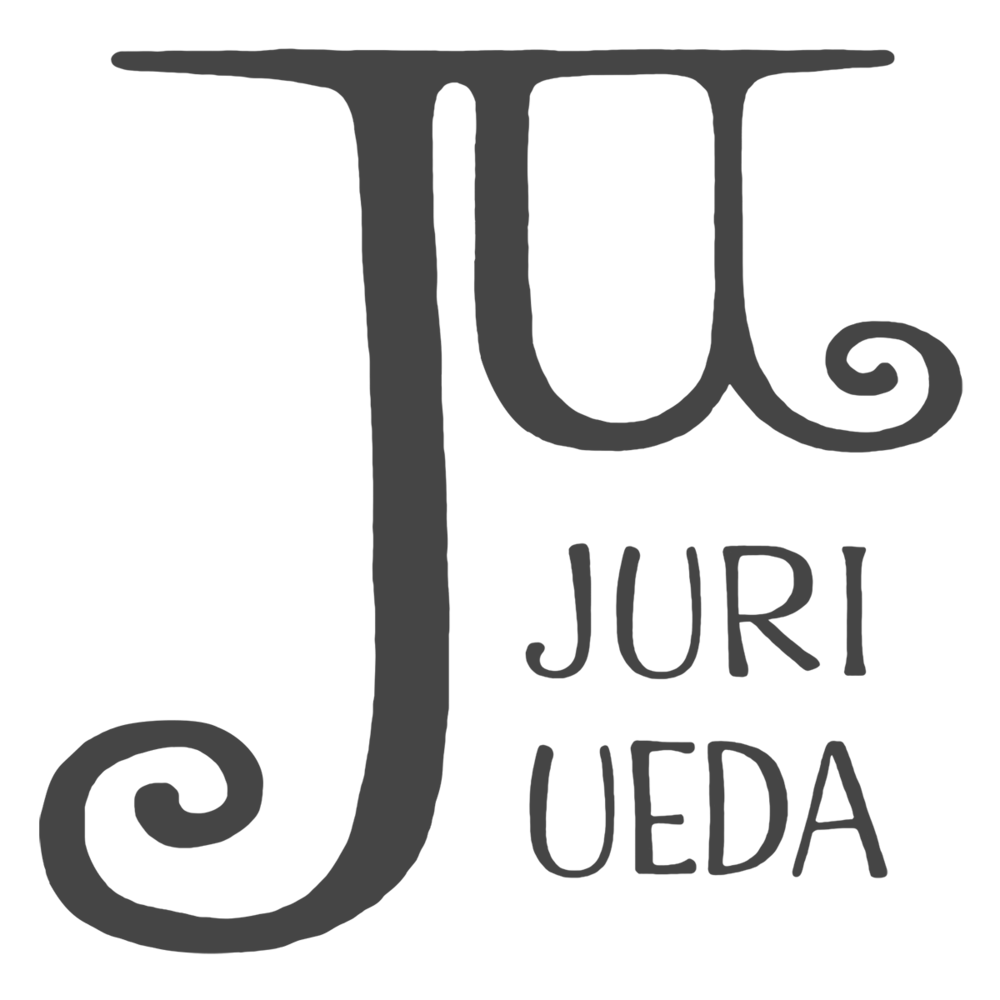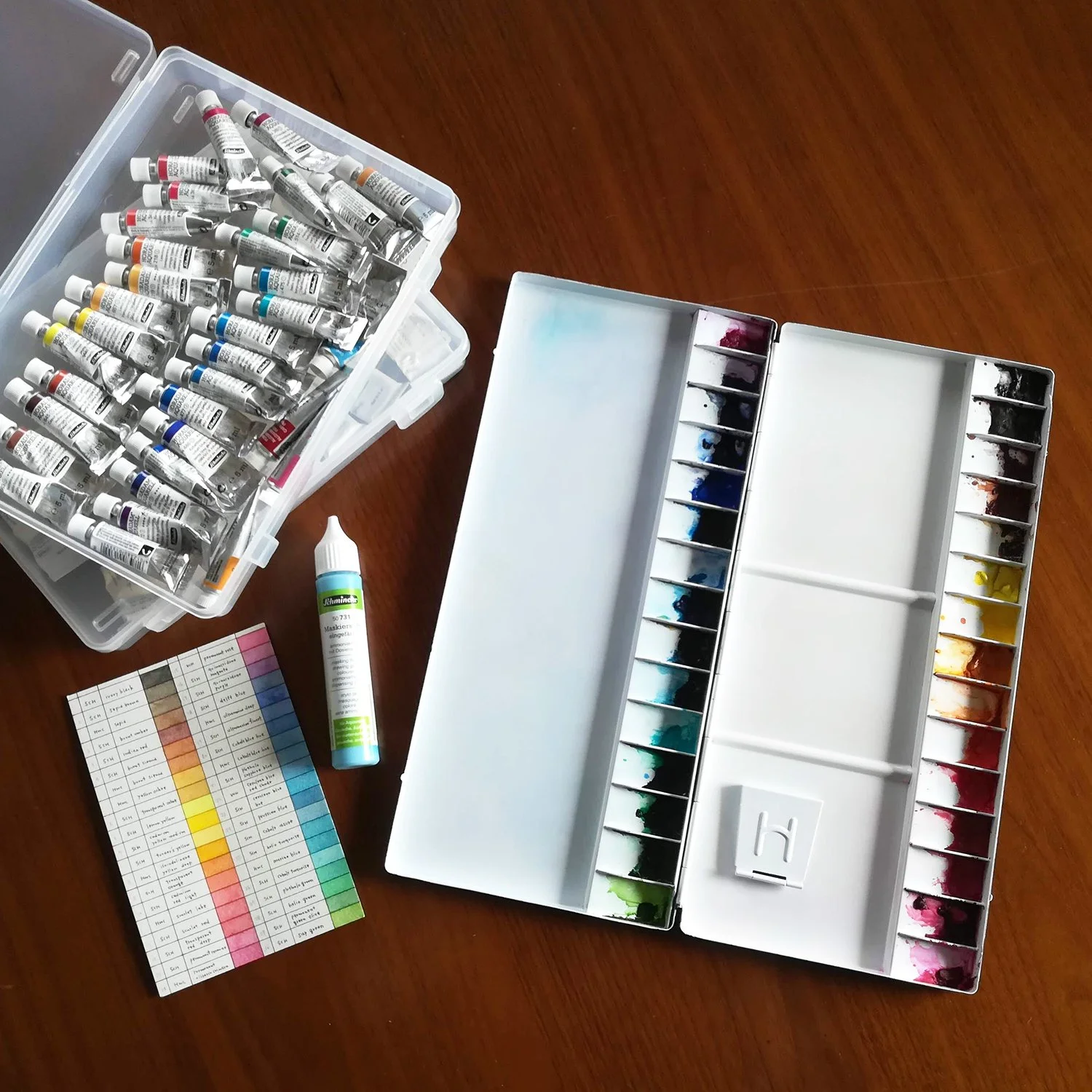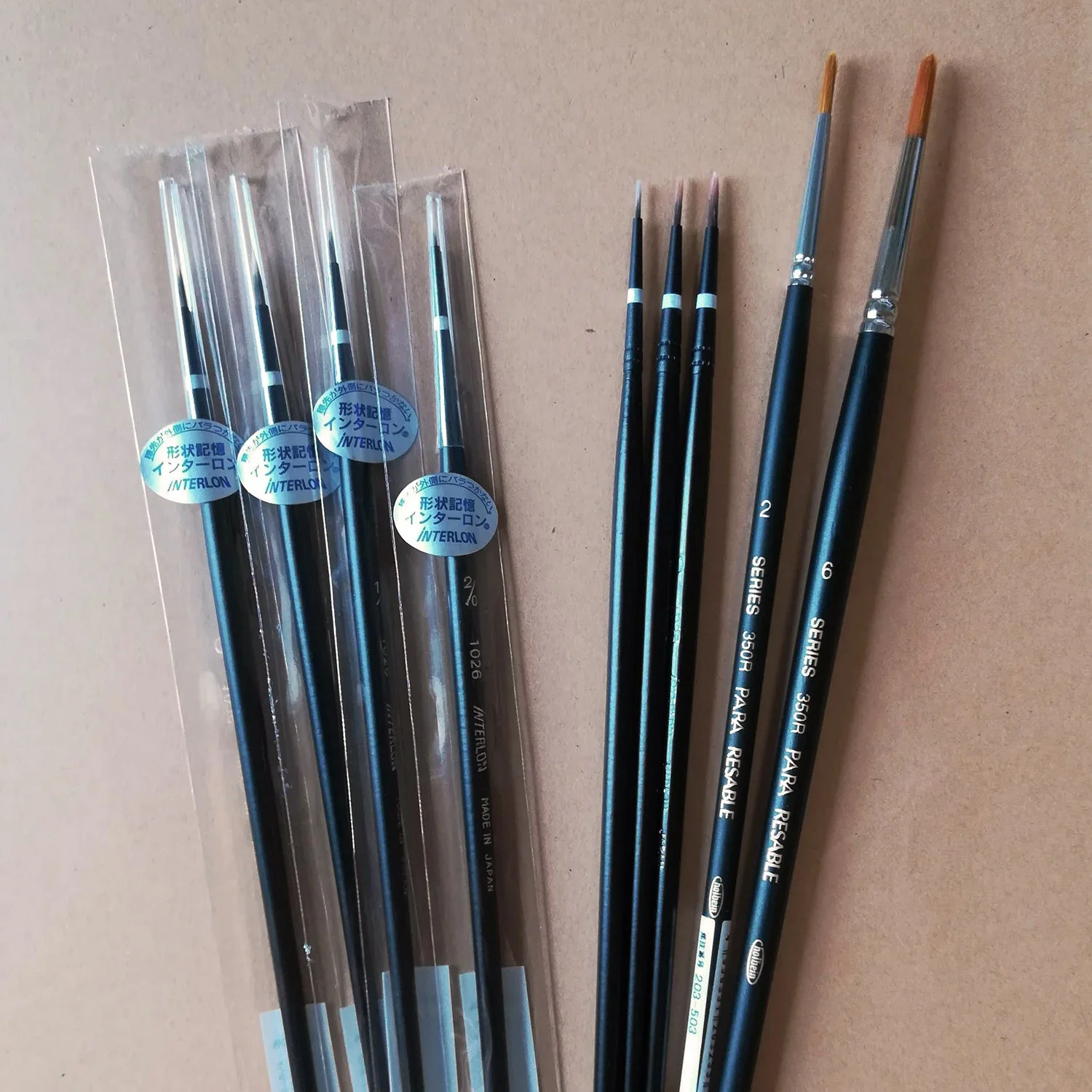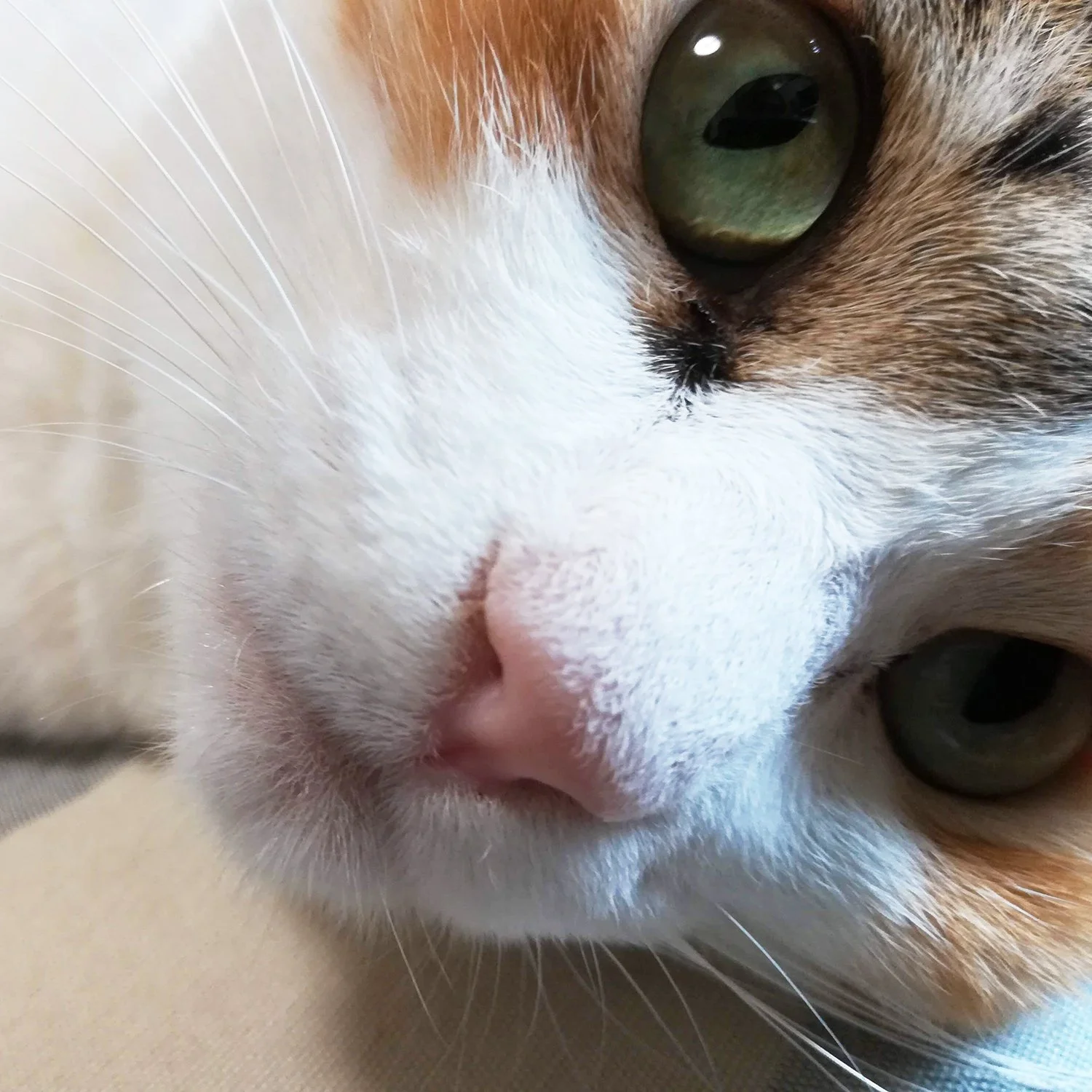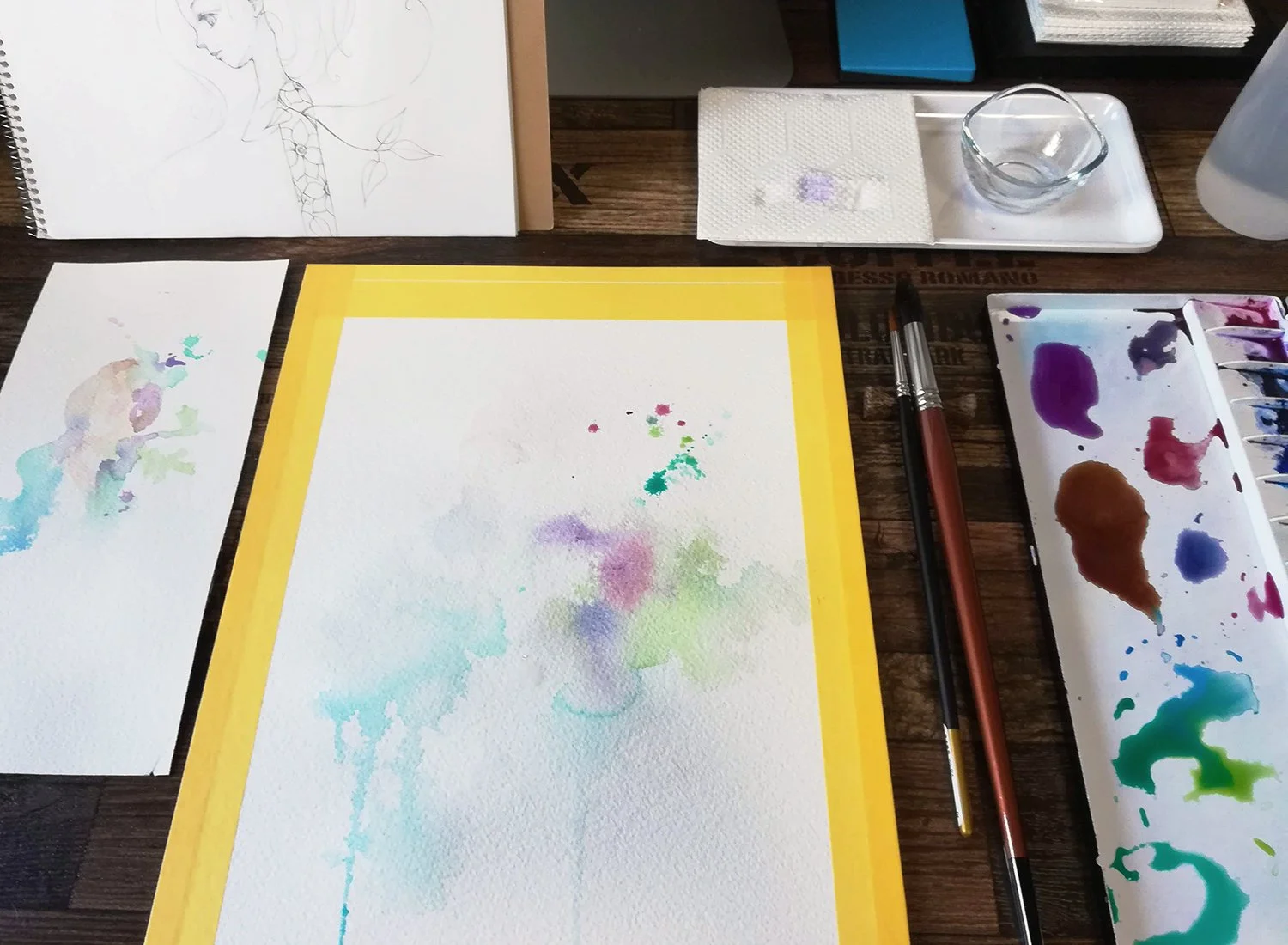Here are the things I use to create watercolor paintings.
When it comes to watercolor, for some people it’s all about brushes, for others it’s paper, and there are a few that seem to be able to paint incredibly with, on, anything. You can also go mixed media traditionally with gouache, acrylic, or even digitally.
What’s best is different for everyone. Sometimes what you already have is enough. Please have fun exploring as much as you can and find out what you enjoy the most, then figure out what works the best for you to do it.
- Sketchbooks: I used to draw everything on loose sheets of scrap paper. It wasn’t pretty. Now I use multiple sketchbooks. The small black Moleskine for basic ideas in words and indecipherable scribbles, “Croquis” for rough sketches and doodling, “Sketchbook” for detailed drawing for painting.
- Mechanical pencil: I do most base drawing with this. It’s S3/0.3mm S-series from Pilot, usually with 2B lead. I also have Orenz from Pentel, but it tends to leave marks on paper because of its unique structure…
- Pen: I use Copic Multiliner series from .Too. I always carry 0.03 and 0.05 with me. Back in the U.S., I was a heavy user of Micron from Sakura. Both are great!
- Tracing paper: A lot of artists seem to print their under drawings on watercolor paper nowadays, which would be great especially if you draw digitally. I still manually trace with tracing paper and pencils, and usually erase most of it later.
- Scrap pieces of watercolor paper: Sometimes I just don’t like what I painted, and it has to go. In these instances, I would cut them up and keep the pieces of watercolor paper for later use. The texture is different on the back, but the paper color is the same. Perfect for quick color tests. So even if it feels clearly a failure to you now, don’t throw it away in frustration, keep it for the success in the future.
- Masking tape: There’s no word to describe the feeling when you just finished a painting, and started peeling off the masking tape… and realize you had peeled off a layer of watercolor paper with it. I’ve tried many masking tapes, and so far this is the best one. It’s called “No Residue Masking Tape” from 3M Japan. I recommend it to anyone in Japan with too sticky/not sticky enough masking tape problems.
- Watercolor paper:
For years I’ve been painting on Arches Rough 300g/m² watercolor paper. I just love the texture. For me, it is worth the investment since it plays a big role in creating my paintings. I used to paint on smoother paper from Arches and several other brands, and most felt fine but did not quite click. Each paper is so different depending on the textures and brands. If you’re looking for the right paper now, don’t settle too fast… the next one might be the one for you.
Also, I use blocks. I really don’t like water-glueing the paper unless I absolutely have to. At first it felt like cutting corners, but it saves time, and works much better for me.
- Paints: Currently I use Schmincke, Winsor&Newton, and Holbein. When choosing paints, I look at lightfastness (how resistant the color is to fading when exposed to light) and opacity. I always prefer paints that don’t fade, and I might like it transparent, opaque or in the middle depending on the color. I buy them in tubes, and dry them later.
- Palette: Last year I decided to start using more variety of paints, and got this aluminum palette. Made the color chart of the paints I might want in it, picked 30 and dried them. Since then, found out a lot about how I paint. It’s been an interesting experiment that I’ll continue on for a while, but probably will cut it back down to much less colors in the end.
- Masking fluid: I rarely use it because of the stickiness... but I will need it when I need it. The blue thing in the middle is masking fluid from Schmincke. I like that it’s blue and easy to spot on paper, but find it slightly hard to remove. I might just go back to Winsor&Newton that I used to have before this one.
- Brushes:
I don’t invest much into brushes - I got all my natural hair brushes for free as store/brand promotions, and I use synthetic brushes most of the time. The one on the right is #16 700 round Black Resable (synthetic/squirrel mix) from Holbein, that I use often for first several layers of a painting and background.
But if you work large, definitely worth it to have some big soft natural hair brushes. Compared to sythetic/resable, they generally hold more water/color and move more smoothly, causing less damages to the paper surface.
- Tiny brushes:
I spend most of my painting time with these. Two on the right are Para Resable from Holbein, synthetic/sable mix. Others are Interon, shape memory nylon brushes. I have them in #0 and smaller, and always keep several new ones in stock. For most small shapes I use #6 Para Resable, for most tiny details #0 Interlon.
- Unnecessarily big bucket for water: Probably a large drinking cup/glass would be enough, but I just like to have a lot of water around… Also it prevents me from mistakingly drinking muddy paint water (it is known to happen.)
- Paper towels: I just can’t do with cloths.
- Small water dispenser: It comes in handy when you need a good amount of clean water in a hurry.
- Blow dryer: Some people don’t even use it, I can’t paint without it. It pays to have a reasonably good one, that has some power to dry quickly without heating up the paper too much. It makes difference in the quality of paper surface.
The last but not the least, Shichimi the cat to keep me company and oversee the workspace environment!
This is my regular set-up for paining. Stuff I constantly move my brushes around to are on the right side since I’m right-handed. From the top left clockwise…
- Detailed drawing for the painting if I have one
- iMac to keep my references (photos, color studies, etc.) on display, also play music or podcasts
- Paper towel
- Little glass cup for some clean water to use when blurring tiny details, so I don’t need to go back and forth between the big bucket and the painting so many times (and often end up with too much water on the brush)
- Palette, and further to the right are the jar of brushes, the big bucket of water and the blow-dryer
- Chopstick rest to keep the brushes in use at the moment from going missing (for some reason, they often do… and I’d have to get up and search for them)
- Paper to paint on in the center
- Scrap paper on the left to test colors and doodle
- Further to the left would be a big cup of coffee, and right behind me would be the cat!
For me, nothing compares to how freeing it feels when I have everything ready both at hand and in my head, and start splashing away.
I really hope to share the joy of painting with you!
